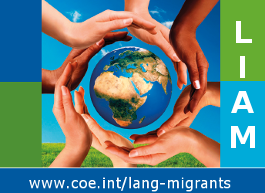Linguistic profiles and profiling
Traditionally language competence is thought of in holistic terms, as a collection of undifferentiated abilities. Examples of this approach are the requirement that pupils should achieve CEFR level B2 in their first foreign language by the time they leave school, or that adult migrants should achieve CEFR level A2 in the language of the host community in order to secure a long-term residence permit. In both cases it is assumed that the same level of proficiency will be achieved in listening, reading, speaking and writing. However, this assumption is not supported by the reality of language use. Even in our first language our proficiency varies from activity to activity and from person to person. In most cases we understand more than we can express, and native speakers differ from one another according to educational background and the kinds of communication they engage in on a daily basis. All native speakers of a language can take part in spontaneous informal conversation, but their listening and reading skills vary according to their educational level, personal interests and professional orientation. The same is true of the productive skills, speaking and writing, especially when they are used for formal purposes; by no means all native speakers of a language are able, for example, to give an extended oral presentation or write a report. Each of us has a communicative repertoire, or profile, that comprises the activities and kinds of discourse we regularly engage in.
When it comes to learning additional languages, the Common European Framework of Reference for Languages (CEFR) recognizes that plurilingual competence is generally uneven: learners usually attain greater proficiency in one language than in the others, and their profile of competences is likely to differ from language to language. Because the CEFR describes language proficiency in terms of different communicative activities – listening, reading, spoken interaction, spoken production, writing – it can be used as the basis for profiling in two different but complementary ways, both of which are relevant to adult migrants.
First, descriptors in the CEFR can be used or adapted to describe the repertoire of language skills that migrant learners need to acquire in order to begin the process of integration in their new society. Some of those skills – for example, understanding signs and public notices or being able to answer the questions asked by officials – are needed by all learners. But other skills – for example, the ability to understand instructions related to a particular kind of work or to communicate simple messages in writing – may or may not be necessary, according to the situation of the individual migrant. This suggests that the same language course will not be appropriate for all migrants and implies that those charged with designing and delivering language programmes for adult migrants should, where possible, adopt a modular approach in order to meet their learners’ various and divergent needs. Tailor-made courses usually follow this principle. A profiling approach also acknowledges that adult migrants may need to achieve different levels of proficiency in different communicative activities. This has implications for language tests. If adult migrants are required to take tests, they should do so at different levels for different CEFR activities, according to their target profile, instead of taking a test linked to a single CEFR level.
Secondly, as adult migrants become increasingly proficient in the language of their host country, their sense of what they need to learn is likely to evolve. Besides informing the design of courses based on objectively determined profiles of communicative need, the CEFR’s approach to the description of communicative proficiency supports the negotiation of learning targets that correspond to learners’ individual needs. This is one of the functions of the European Language Portfolio model that has been developed for use with adult migrants]. In particular, the checklists of “I can” descriptors are designed to help migrant learners to identify learning targets, monitor learning progress and assess learning outcomes for themselves. The guide for teachers explains in greater detail how this ELP can be used to profile migrant learners’ existing proficiency in the language of the host country and identify elements of the proficiency profile they need to develop [see chapter 7].
HJK
Related resources
- The European Language Portfolio for Adult Migrants: Learning the language of the host country, 2012, Barbara Lazenby Simpson
EN FR IT
- Linguistic integration of adult migrants and the ELP: an introduction, 2012, David Little
EN FR IT
- ELP for adult migrant language learners: A Guide for Teachers, 2012, Barbara Lazenby Simpson
EN FR IT
- Goal-setting and Self-assessment Checklists, 2010, David Little
EN
- Workshop activities to introduce the CEFR and the ELP, 2010, David Little
EN



